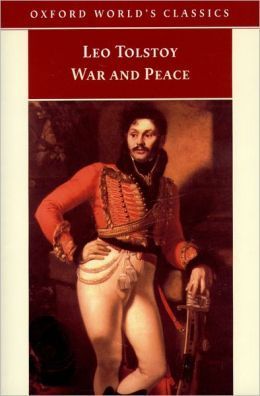Title: Epic Tapestry of Humanity: "War and Peace" by Leo Tolstoy
Leo Tolstoy's "War and Peace" is a monumental masterpiece that stands as one of the greatest achievements in world literature. Published between 1865 and 1869, this epic novel is not merely a narrative; it is a panoramic exploration of the human condition against the backdrop of war and societal transformation.
At its core, "War and Peace" weaves the lives of numerous characters against the canvas of the Napoleonic Wars. The novel delves into the personal and societal repercussions of conflict, exploring the complexities of love, ambition, morality, and the inexorable march of historical forces.
Tolstoy's prose is both profound and accessible, capturing the essence of human experience with a depth that resonates across time. His ability to infuse the narrative with philosophical reflections on fate, free will, and the nature of power elevates the novel beyond a mere historical epic to a meditation on life itself.
The vast array of characters in "War and Peace" is a testament to Tolstoy's skill in portraying the multifaceted nature of humanity. From the idealistic Pierre Bezukhov to the pragmatic Andrei Bolkonsky and the spirited Natasha Rostova, each character is meticulously crafted, presenting a rich tapestry of personalities that mirror the diversity of the human experience.
The novel's portrayal of war is unparalleled in its realism. Tolstoy's descriptions of battle scenes are visceral and immersive, providing readers with a profound understanding of the chaos, brutality, and randomness of warfare. Simultaneously, his exploration of the grand historical forces at play offers a macroscopic view of the events that shaped Europe during the early 19th century.
One of the novel's remarkable features is Tolstoy's direct engagement with the reader. Through historical analyses and philosophical interludes, he breaks the conventional narrative structure, inviting readers to contemplate the broader implications of the characters' actions and the inexorable flow of history.
"War and Peace" is not without its challenges. The sheer length and the detailed historical and philosophical discussions may be daunting for some readers. However, those who embark on this literary journey are rewarded with an unparalleled depth of insight into the human psyche and the forces that shape the course of nations.
In conclusion, "War and Peace" is a magnum opus that transcends its time and setting. Tolstoy's exploration of the human experience amid the turbulence of war and social change is a testament to the enduring power of literature. For those willing to invest the time, this novel is an enriching and transformative journey into the complexities of life, love, and the inexorable march of history.

Comments
Post a Comment